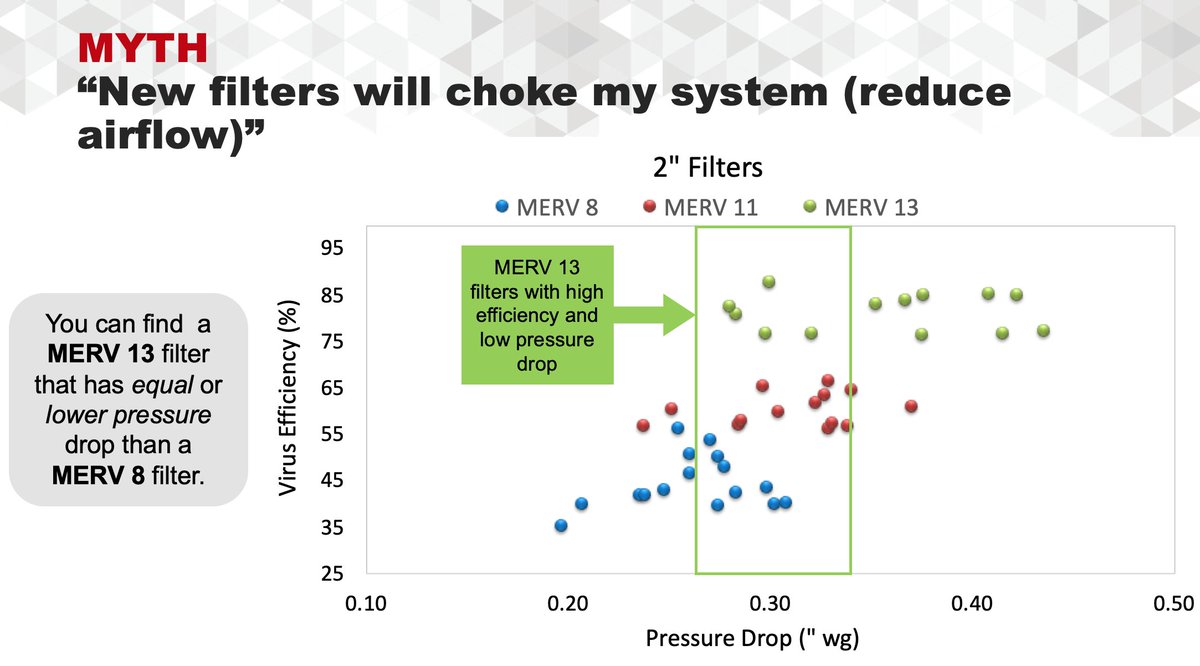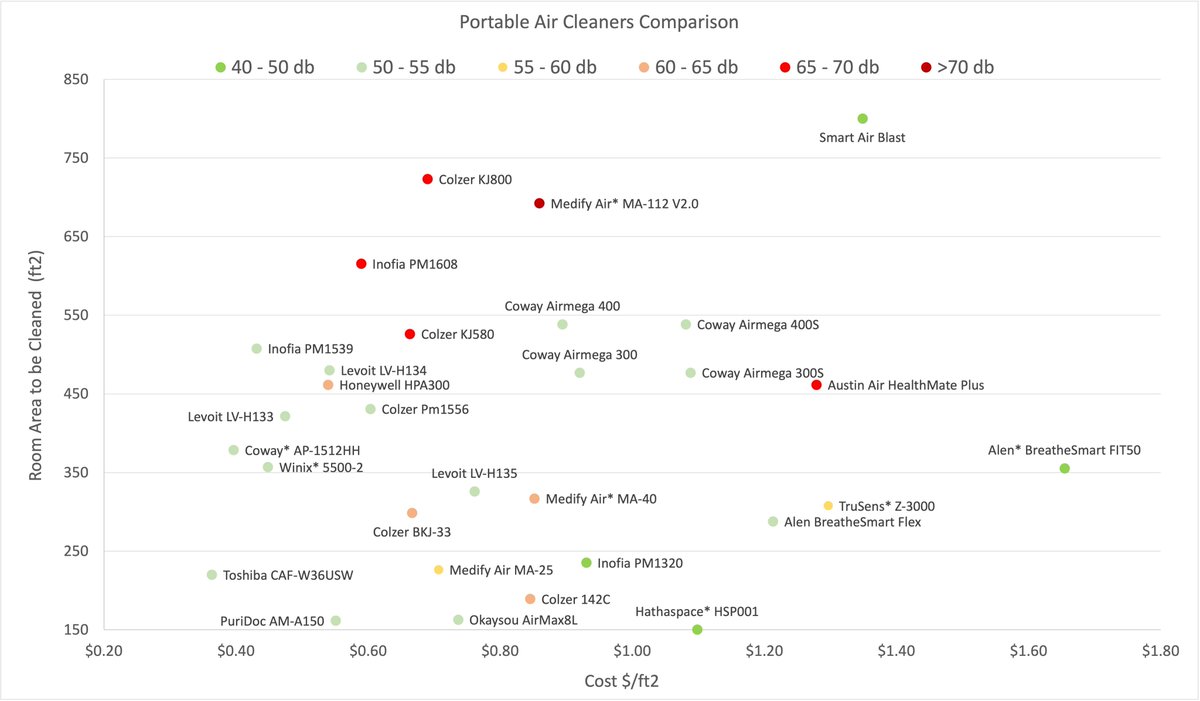
More results involving Electronic Air Cleaners. This time using Hydrogen Peroxide in the air for air/surface disinfection (PCO + DHP).
I will focus on the air disinfection results.
Results are from a chamber test 👇.
I will focus on the air disinfection results.
Results are from a chamber test 👇.
Principle of work per manuf.: the device produces dry hydrogen peroxide with max concentration of 20 ppb that is able to last long enough to diffuse throughout the space (half life is 30 - 60 mins; for comparison: half life of ions is in the seconds).
trane.com/content/dam/Tr…
trane.com/content/dam/Tr…
Result from the in-duct device (Name = Blade DHP) show that the device is not very effective to reduce airborne concentration (<10% effective).
Note: You will need to subtract natural decay curve.
Note: You will need to subtract natural decay curve.

Result from the in-room devices (Name = Sphere and Sentry) show that the devices are not very effective to reduce airborne concentration (<25% effective).
Note: You will need to subtract natural decay curve
Note: You will need to subtract natural decay curve

• • •
Missing some Tweet in this thread? You can try to
force a refresh










